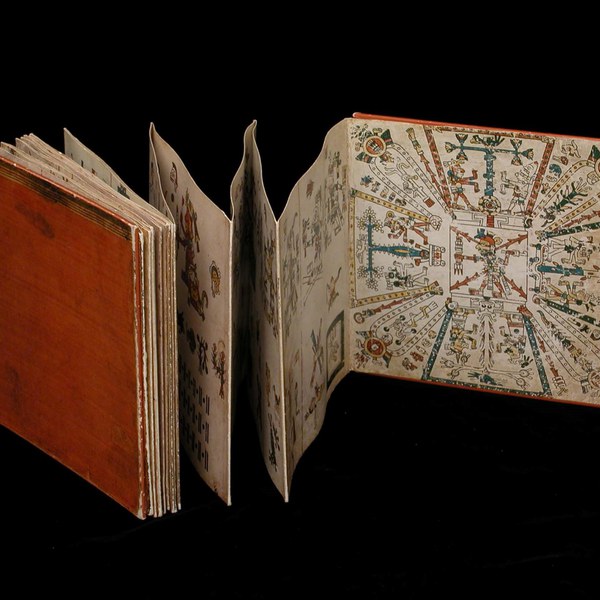This lecture focuses on the painted books of Aztec Mexico. These sixteenth-century documents are considered works of Art by some, and Writing by others. The Aztecs and their neighbors conceptualized writing and image-making as a single cultural category, one that involved a nonverbal system of graphic communication in which images carry meaning directly without a detour through speech. Exploring the place where our Western conceptions of Art and Writing come closest together, this talk reviews some of the graphic vocabulary of Mexican pictography. Dr. Boone will focus on the arrangements of the images and analyze the underlying spatial grammars of different literary genres.
Space is inherently two-dimensional in the codices. These spaces that surround the images may at first glance appear to be empty or neutral, but probably in no case is this truly so. Rather the fields of pictography are pregnant with meanings that the forms and marks on the pages elicit. At the same time, these spaces are the active forces that charge the images with distinct meanings and give shape to the messages.
Elizabeth Hill Boone, a specialist in the art of Aztec Mexico and Mexican pictographic writing, is an emeritus professor at Tulane University. Among her many edited and co-edited books are Writing without Words; and Their Way of Writing: Scripts, Signs, and Pictographies in Pre-Columbian America. Among her single-authored books are The Codex Magliabechiano; Stories in Red and Black: Pictorial Histories of the Aztecs and Mixtecs; Cycles of Time and Meaning in the Mexican Books of Fate; and Descendants of Aztec Pictography: The Cultural Encyclopedias of Early Colonial Mexico. She is a fellow of the American Academy of Art and Sciences, a corresponding member of the Academia Mexicana de la Historia, and a recipient of the Order of the Aztec Eagle by Mexico. She was named the College Art Association’s Distinguished Scholar in 2019.

